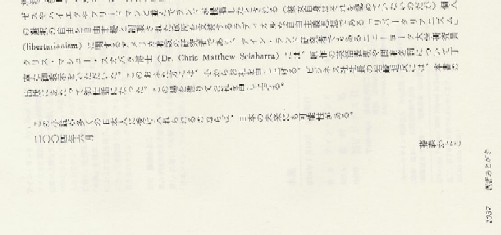
This essay is original to Notablog, first appearing on 20 July 2004.
The essay has also been
into
Russian, thanks to Alexander
Nikiforov (and for the
Ukranian
audience by Sandi Wolfe); into
Spanish
by the Science Team, and into
Macedonian by
Converter.net.
See Notablog, "Multilingual
Appeal" (9 April 2012), and "Rand:
Big in Japan, Romania, Poland, Russia, Etc., Etc., Etc." (12 August 2015).
"THE FIRST LANDING OF AYN RAND IN JAPAN!"
By Chris Matthew Sciabarra

Kayo explains that, in Japan, new books are decorated by a wide "belt." The "belt" or "blue skirt" (see above) reproduces a small part of the book, as advertisement. In this instance, Ayn Rand has been packaged for the distinctly Japanese audience with the following information: "Ayn Rand is the fountainhead of Libertarianism, a grass-roots American people's philosophy that stands against the Neo-Conservative." I swear: I had absolutely nothing to do with that; as Kayo admits, the copy doesn't quite capture the essence of Ayn Rand. But I'd be the first to say that the Publisher has noted correctly the essential opposition between Rand and neoconservative thought. Apparently, many Japanese readers are interested in the globalist implications of neoconservatism, so anything that suggests opposition is a selling point. The advertisement continues: "This novel placed second among the best 100 (English-written) novels of the twentieth century, according to a survey conducted by Random House and Modern Library in 1998. This novel has sold well since 1943, more than 7 million copies so far! The first landing of Ayn Rand in Japan!"
Meanwhile, the aspect of this project that has warmed my heart is Kayo's acknowledgment on page 1037 (acknowledgments tend to be published at the end of books in Japan). I have scanned the relevant page here:

I've been informed that my name, rendered in Japanese, is to the left of the parenthetical English translation, 13 letters including 11sign-like letters and two period-like marks, 4 lines down in the above image. Kayo translates the passage for me:
I must first give thanks to Dr. Chris Matthew Sciabarra. Dr. Sciabarra is one of the best and most productive scholars in the study of Libertarianism and Ayn Rand. His careful comments and thoughtful advice helped me to complete my laborious project�the translation of this long, great novel, The Fountainhead. Dr. Sciabarra's great dedication to the first encounter between the Japanese intellectual people and Ayn Rand cannot be overemphasized.
Thank you, Kayo, for all your diligence, conscientiousness, and kindness.
Get your copy of the Japanese Fountainhead by visiting amazon.co.jp.
 |
 |